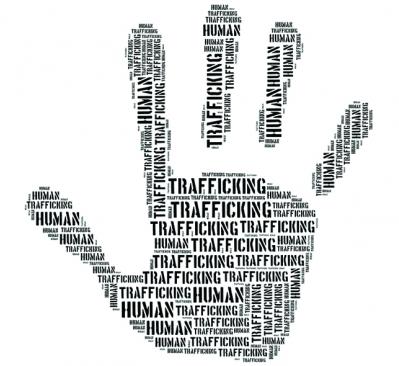
Human trafficking is defined by the United Nations as the recruitment, transportation, transfer, harboring or receipt of persons, by means of:
- Threats or use of force or other forms of coercion;
- Abduction;
- Fraud or deception;
- Abuse of power or of a position of vulnerability; and
- Giving or receiving of payments or benefits to achieve the consent of a person or having control over another person, for the purpose of exploitation (Protocol to Prevent, Suppress and Punish Trafficking in Persons, 2003).
Human trafficking occurs both in the United States (U.S.) and abroad, and can have devastating effects on its victims.
Victims of human trafficking in the U.S. include both U.S. citizens and residents trafficked within its borders, as well as foreign nationals trafficked into the country from abroad. International traffickers consider the U.S. a major destination for victims of both sexual and labor exploitation. Traffickers use “push-pull” factors to take advantage of their intended targets (Chang, 2006; Dabby & Liou, 2014). Some examples of “push-pull” factors include:
|
PUSH FACTORS |
PULL FACTORS |
|
War, violence, genocide |
Safety and security |
|
Persecution |
Freedom from persecution |
|
Lack/limited employment & educational opportunities |
Availability of employment & educational opportunities |
|
Disasters, both natural and man-made |
Improved quality of life |
Given these complex realities and experiences, victims of trafficking may need a range of supports and services.
The NRCDV recognizes that there are different philosophies, approaches, and debates surrounding human trafficking. Readers are encouraged to examine resources with a critical eye and an appreciation of the depth and breadth of the issues and perspectives on human trafficking.
This special collection is intended to help those interested in learning more about human trafficking and intersecting issues gain a working knowledge of the complexities of human trafficking, as well as applicable laws and policies in the U.S. and internationally. It is also intended to provide resources and tools for practitioners and professionals working at the intersections of human trafficking, domestic violence and sexual violence.









